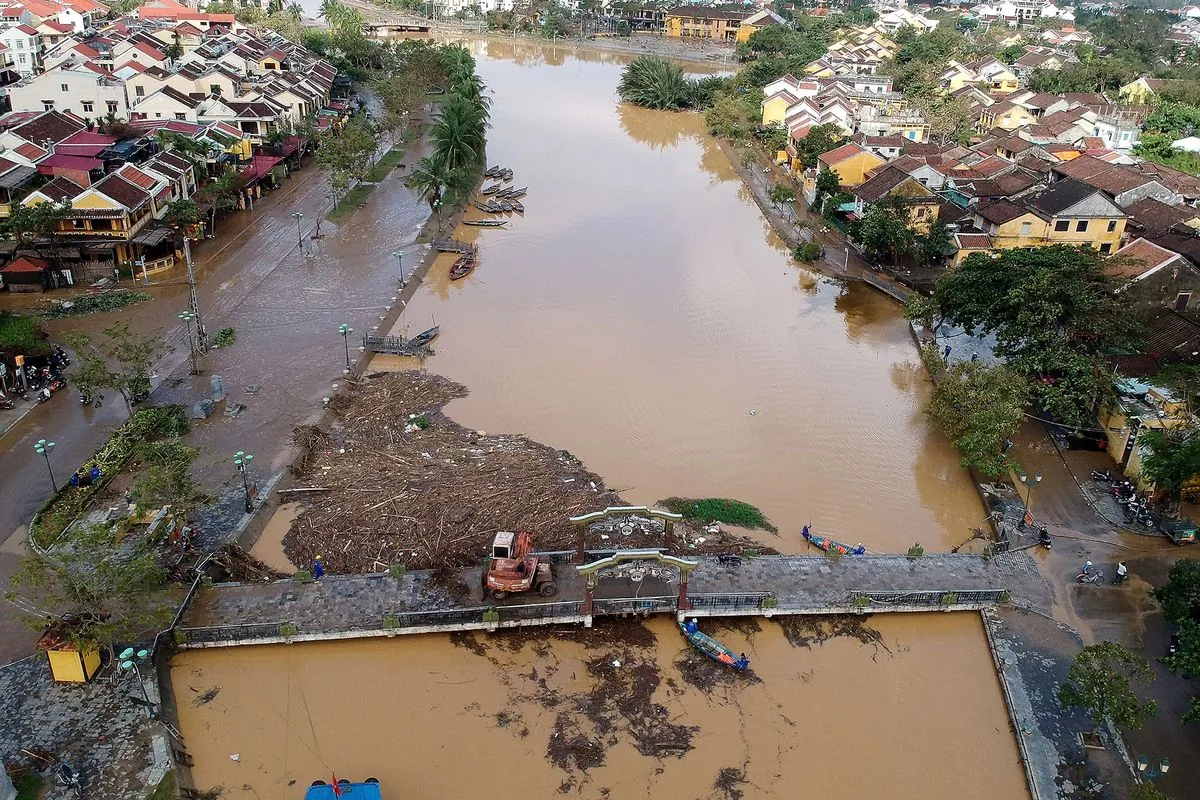Typhoon Yagi, a powerful tropical cyclone, has caused extensive damage and loss of life across Southeast Asia. The storm, which ranks as the second-strongest globally in 2024, has affected Vietnam, China, and the Philippines, leaving a trail of destruction in its wake.
In Vietnam, the typhoon's impact was particularly severe on Saturday, September 7, 2024. The country's Disaster Management Authority reported four fatalities and at least 78 injuries. Quang Ninh province, home to the UNESCO World Heritage Site Ha Long Bay, suffered three deaths and 58 injuries. One death was recorded in Hai Duong province, while 20 people were injured in Hai Phong province.
The storm caused widespread power outages across northern Vietnam, affecting Quang Ninh, Hai Duong, and Hai Phong provinces. In Hai Phong, the VinFast factory, Vietnam's first domestic car manufacturer founded in 2017, was among the facilities impacted. Numerous homes across the region, including in the capital Hanoi, sustained damage or lost their roofs.
Vietnamese authorities implemented strict safety measures:
- Prohibition of sea travel
- Closure of coastal and inland roads
- Suspension of flights at three airports, including Hanoi's Noi Bai International Airport
- Advisory for residents to limit unnecessary outdoor activities
Social media platforms were flooded with images and videos depicting the storm's fury, showing:
- Uprooted trees
- Flooded streets
- Motorcyclists battling strong winds and heavy rain
One notable video from a Hanoi television broadcaster captured trucks on an overpass shielding motorcyclists from the fierce winds.
The U.S. Navy's Joint Typhoon Warning Center at Pearl Harbor, Hawaii, reported that Typhoon Yagi had wind speeds of approximately 125 miles per hour, with gusts reaching 155 miles per hour as it struck Vietnam. This intensity is equivalent to a Category 3 hurricane on the Saffir-Simpson Hurricane Wind Scale.
Prior to reaching Vietnam, Typhoon Yagi had already caused significant damage in southern China. The storm made landfall on Hainan Island, China's smallest and southernmost province, on Friday, September 6, before moving towards Guangdong province on the mainland. Chinese officials described it as potentially the strongest storm to hit the area in a decade.
In Hainan, the typhoon claimed four lives and injured 95 people. China's official Xinhua News Agency reported that the storm caused over $100 million in damage to infrastructure, including highways and waterways.
The Philippines, the first country in Yagi's path, also suffered severe consequences. At least 16 fatalities were reported in the aftermath of the storm, according to Reuters. It's worth noting that the Philippines experiences an average of 20 typhoons per year, making it particularly vulnerable to such weather events.
Meteorologists observed that Typhoon Yagi underwent an "impressive period of extreme rapid intensification" on Wednesday, September 4. Rapid intensification in tropical cyclones is defined as an increase in wind speeds of at least 35 mph within 24 hours. Although the storm briefly weakened, it regained strength by Friday.
In the context of the 2024 storm season, Typhoon Yagi stands out as the second-strongest storm globally, surpassed only by Hurricane Beryl, a Category 5 hurricane that caused significant damage in the Caribbean in July. The Northwest Pacific basin, where Yagi formed, is known as the most active region for tropical cyclones worldwide.
As affected areas begin recovery efforts, the full extent of Typhoon Yagi's impact is still being assessed. The storm serves as a stark reminder of the destructive power of tropical cyclones and the importance of preparedness in vulnerable regions.
